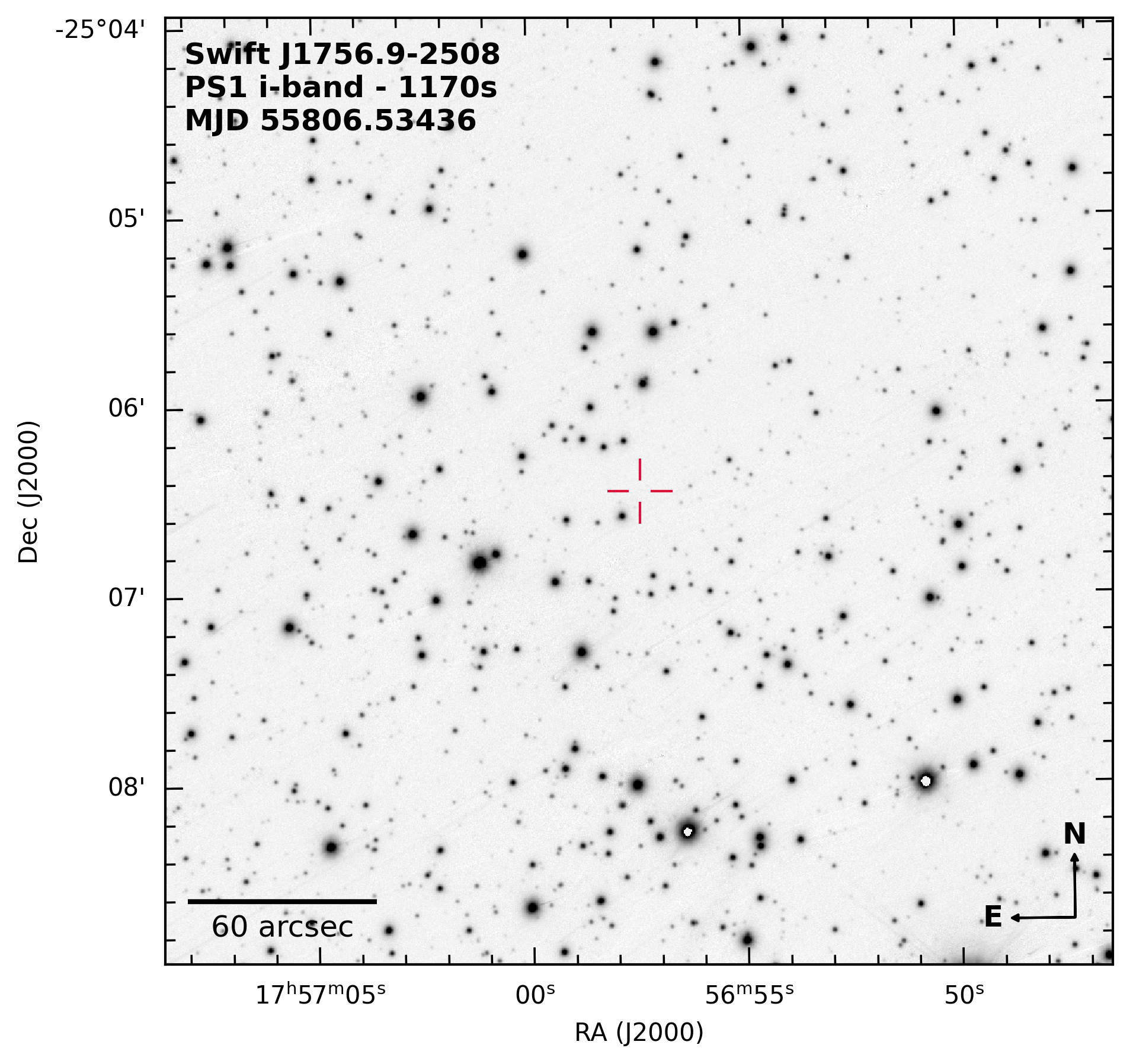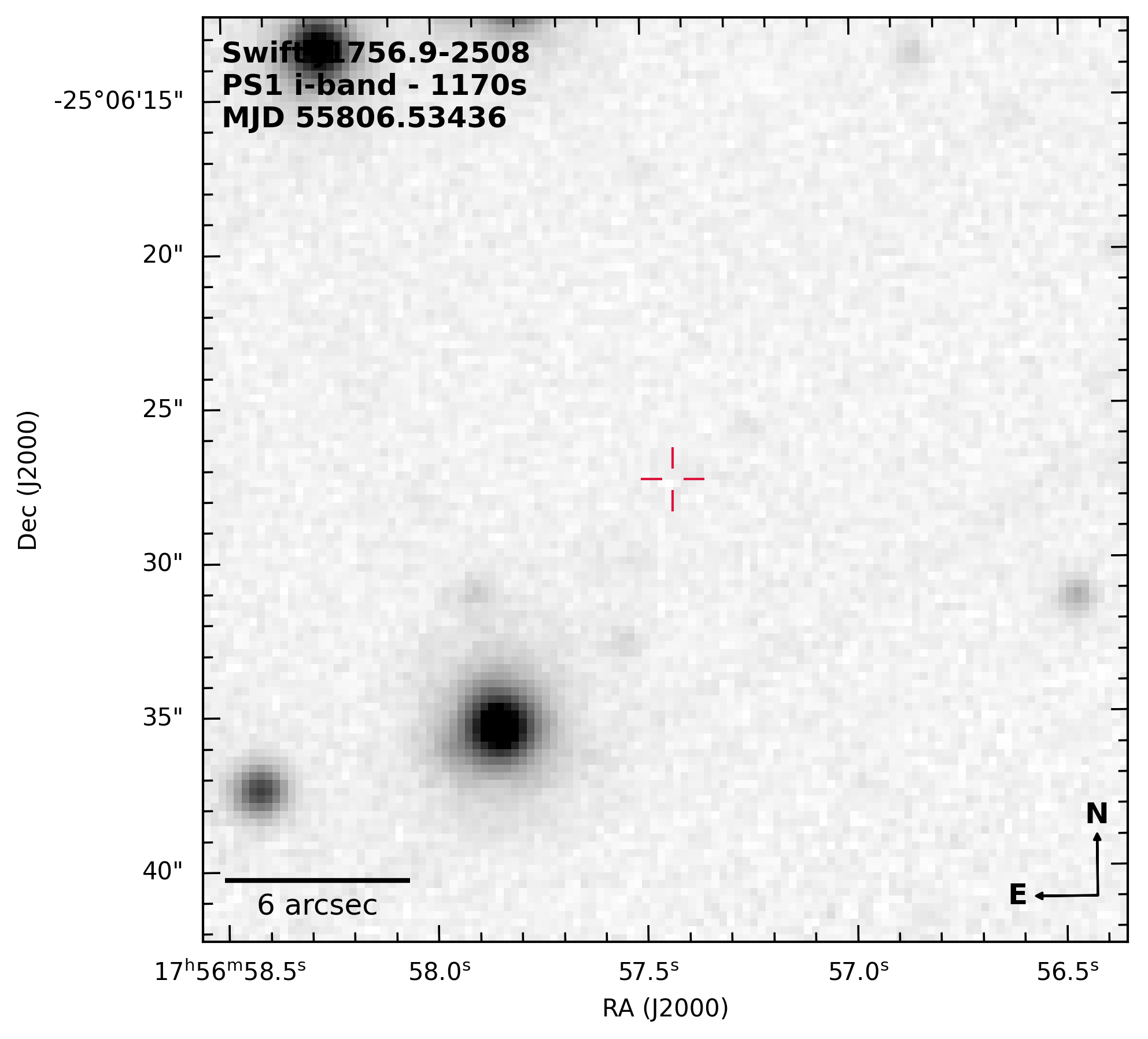« Previous object
Next object »
ID# 17
Swift J1756.9-2508
RA Dec
|
ℓ b
|
Year of discovery: 2007
(Krimm2007)
| Location in Globular Cluster | ||
|---|---|---|
| Type of accretor |
NS AMXP (182.06 Hz / 5.49 ms) |
Transient Krimm2007 |
|
Distance [kpc] (other distances) |
assumed 8
|
Krimm2007 Sanna2018a |
| z [kpc] | -0.03 | Krimm2007 |
| Orbital period (Porb) [min] | 54.7017±0.0013 | Krimm2007 |
| Porb determination method | X-ray pulsation | |
| Thermonuclear X-ray burst | ||
| Peak X-ray flux [erg s-1 cm-2] (2 - 10 keV) |
1.54E-09 | Sanna2018a |
| NH [x1022 cm-2] | 8.14+0.14-0.15 | Sanna2018a |
| E(B-V) [mag] | ||
| Magnitude | ||
| Proposed companion | (likely a He-dominated WD) (donor mass-radius constraint) |
Krimm2007 |
| No radio detection during the 2007 outburst (continuum emission at 8.7 Ghz: Possenti2007, pulsations at 1.4 GHz: Hessels2007) and 2009 outburst (5.5 and 9 GHz; Tudose2009a). A NIR Ks counterpart, exhibiting variability of about 1.3 mag in two observations taken close to the end of the 2007 outburst and during quiescence, was proposed by Burderi2007. The source was not detected in quiescence after the 2007 outburst with an upper limit of 4.3E-4 counts/s (95% c.l., 0.3-8 keV; Papitto2007). Li2021 obtained a value for the orbital period derivative of (7.9±9.5)E-13 s/s. This implies that the binary system had a constant orbital period since the first outburst in 2007. |
| UV | ||
|---|---|---|
| Optical | ||
| X-ray | Fe Kα (6-7 keV) | Koliopanos2021 |
|
|||
|---|---|---|---|
Aladin finding chart
Scroll to zoom. Set survey image in "Manage layers"
Default image: DSS2 Red
Swift J1756.9-2508 in Simbad
Pan-STARRS1 finding chart
Click to enlarge in new tab/window


This research has made use of NASA's Astrophysics Data System (ADS) and the SIMBAD database operated at CDS (Strasbourg, France)
Please acknowledge the use of this catalogue in any published work you derive from it.
Last modified: 09 May 2023.

